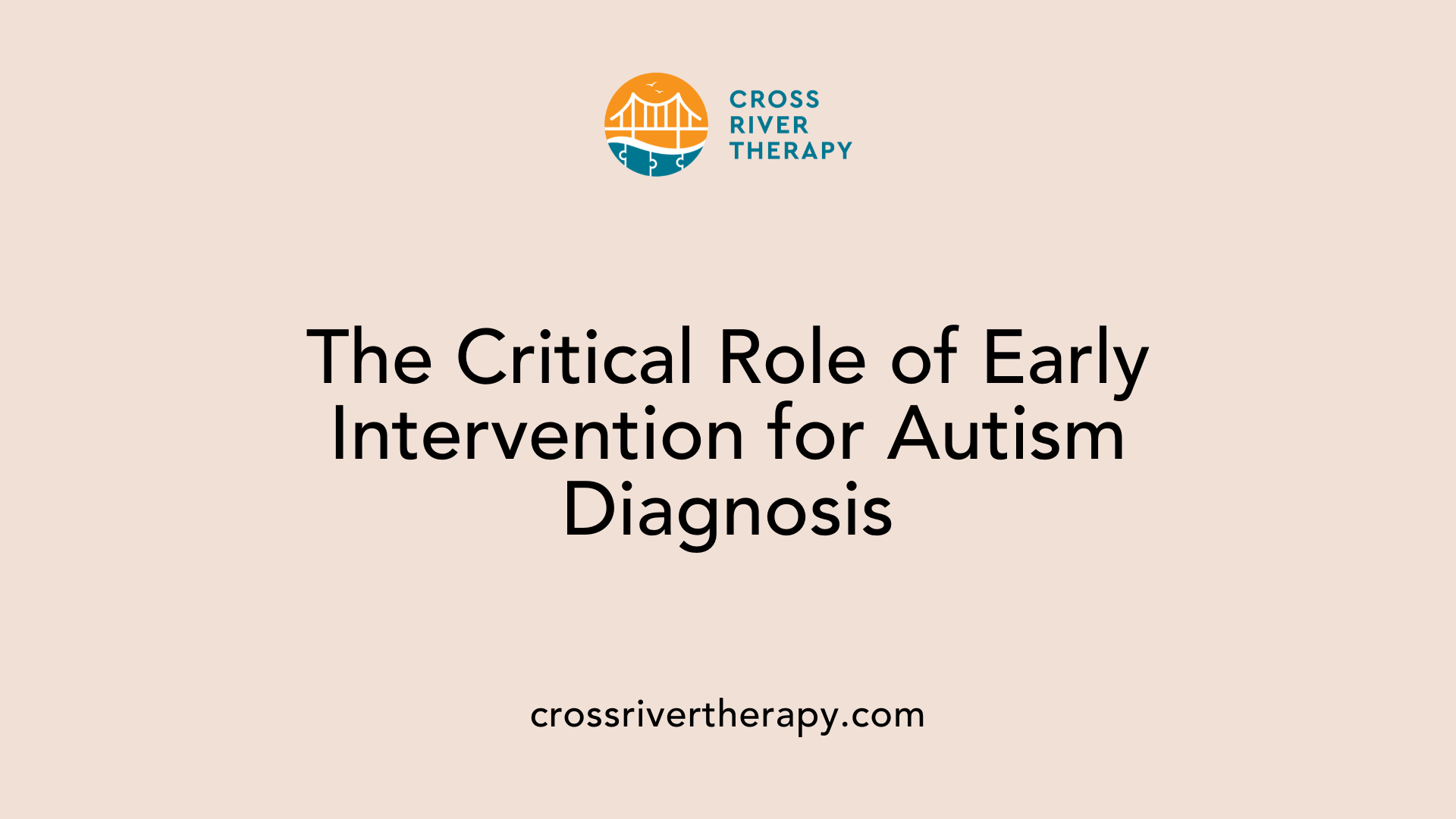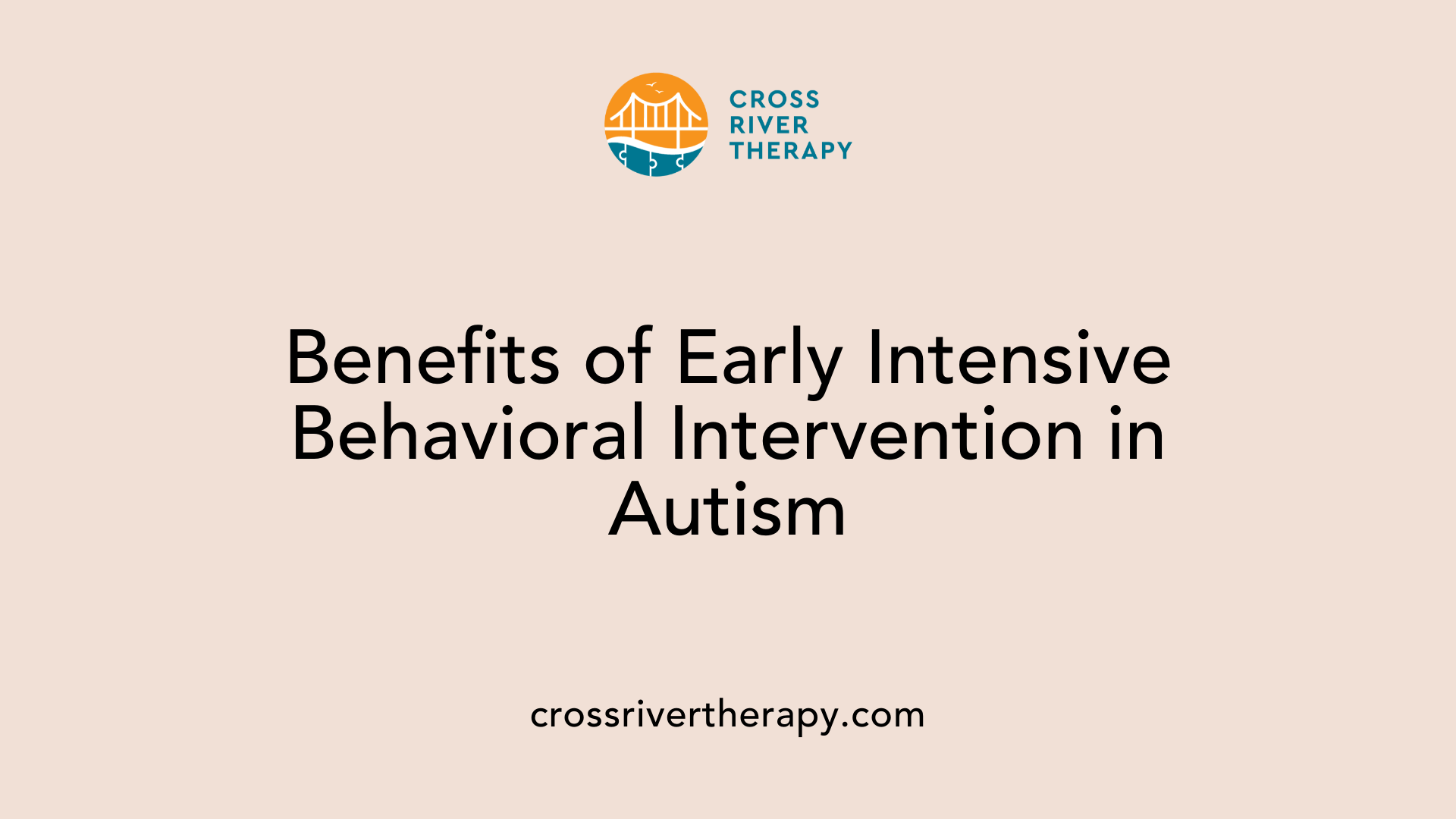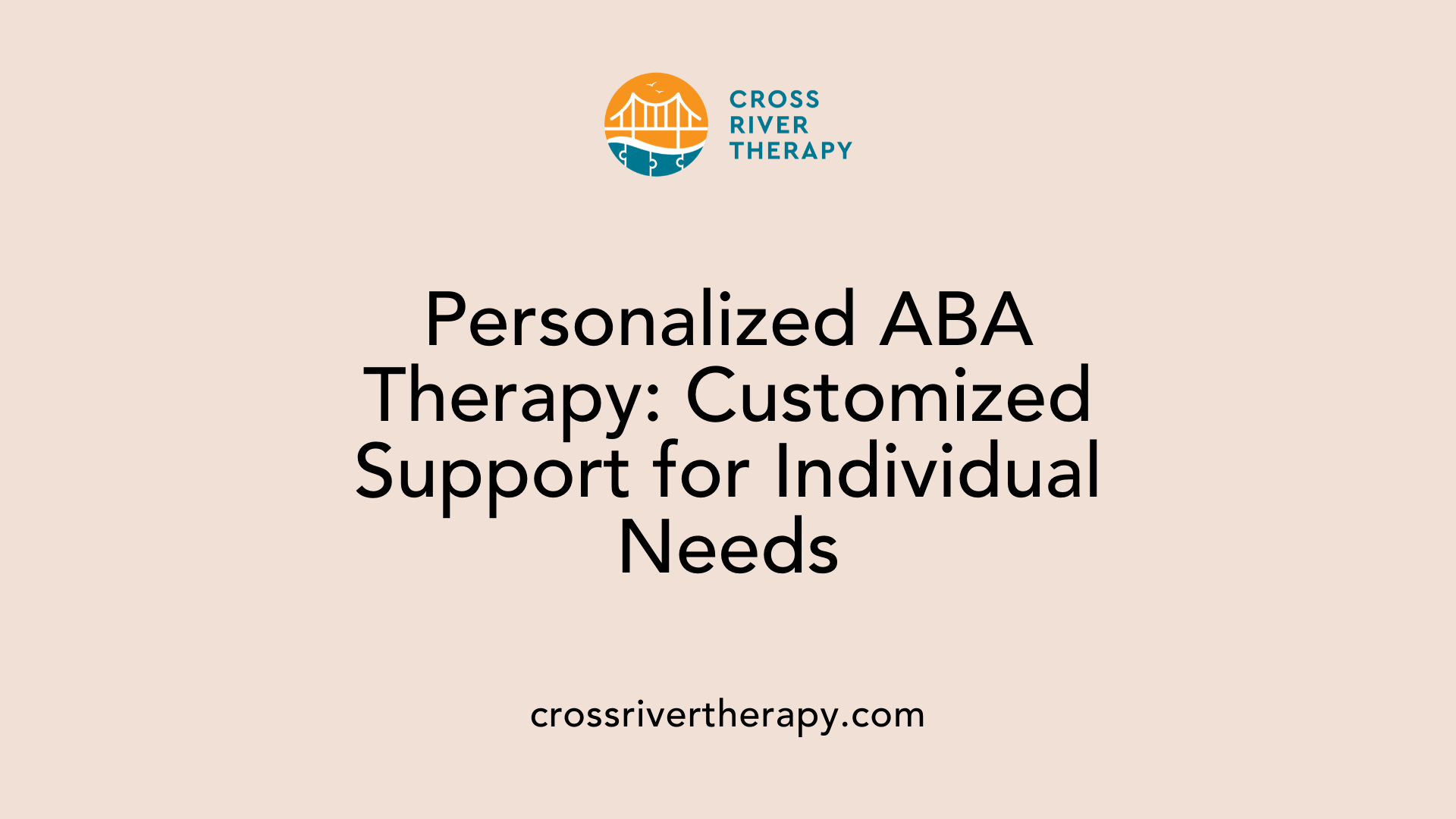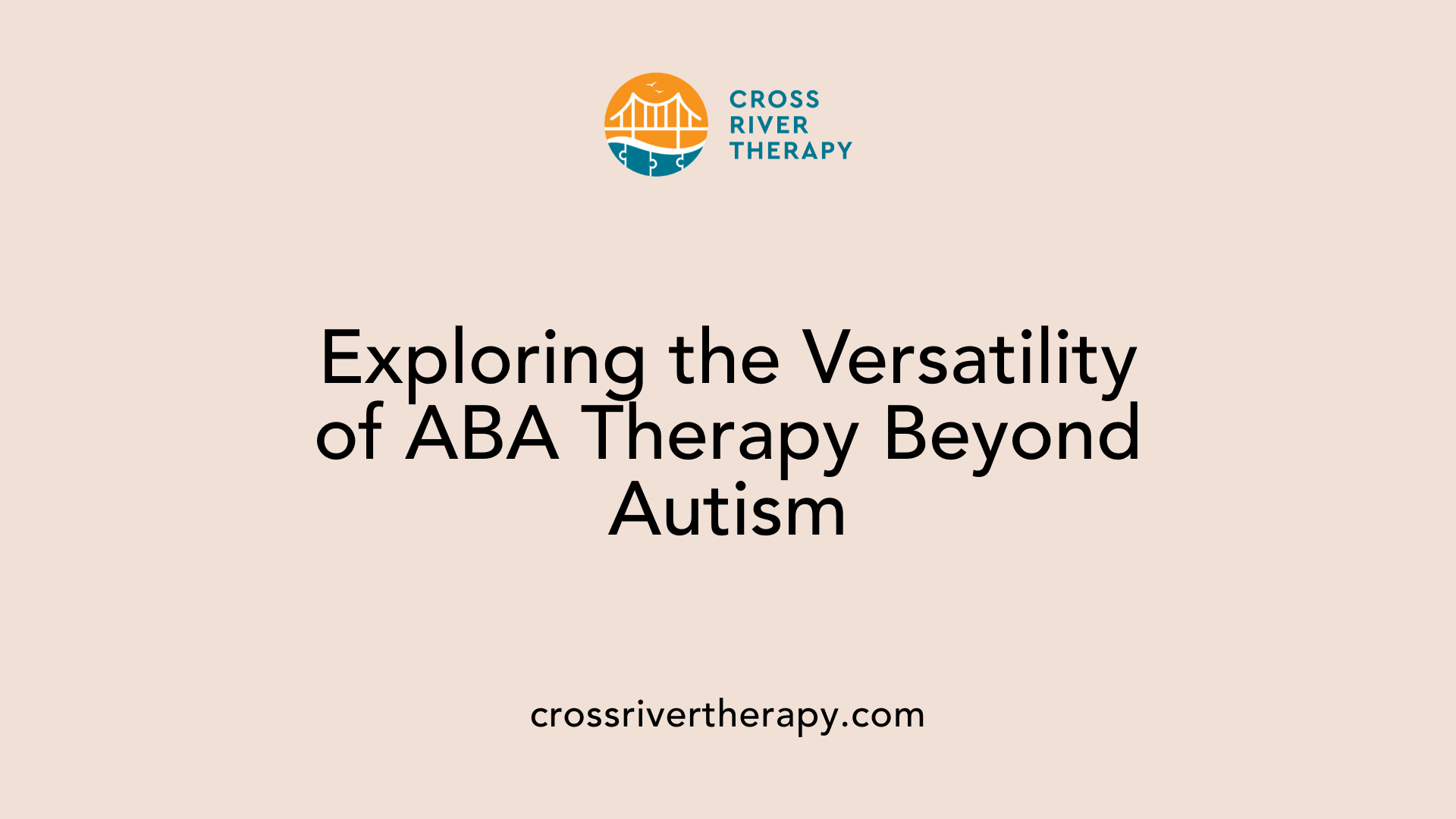The Benefits of Early and Intensive ABA Therapy for Children with Autism
Unlocking Potential: The Power of Early ABA Intervention for Autism
Understanding the Impact of Early ABA Therapy
Applied Behavior Analysis (ABA) therapy emerges as a leading intervention for children diagnosed with Autism Spectrum Disorder (ASD). Recognized for its structured approach to enhancing developmental outcomes, ABA therapy leverages the principles of behavioral science to improve various critical skills such as communication, social interaction, and problem-solving. When implemented early and intensively, ABA has shown substantial promise in setting children with autism on a path toward greater independence and improved quality of life. This article explores the myriad benefits of early and intensive ABA therapy, its supportive research, and how it transforms lives by nurturing crucial developmental skills.
The Significance of Early Diagnosis and Intensive Intervention

What is the importance of early diagnosis and intensive therapy for children with autism?
Early diagnosis and intensive therapy for children with autism spectrum disorder (ASD) are crucial for optimizing developmental outcomes. Identifying autism between 18 to 24 months allows families to access tailored interventions sooner, positively influencing a child's cognitive, social, and communication skills. This early intervention fosters greater long-term independence and skill mastery.
Screening tools play a significant role in this process. For instance, the Modified Checklist for Autism in Toddlers (M-CHAT-R/F) and the Childhood Autism Rating Scale (CARS) are effective instruments for recognizing early warning signs of autism. These evaluations facilitate timely referrals to specialized therapies, including occupational and speech-language interventions, which are essential for building necessary skills.
Despite the benefits of early diagnosis, it is vital to balance the approach to avoid risks such as misdiagnosis or undue labeling. Raising awareness among healthcare providers can enhance early detection processes, ensuring appropriate follow-ups and interventions. Such systemic improvements are not just beneficial for patients; they empower families, leading to better overall quality of life.
| Aspect | Details | Outcome |
|---|---|---|
| Age for Diagnosis | 18-24 months | Access to interventions earlier |
| Impact of Early Therapy | Cognitive, social, communication growth | Greater independence and skill mastery |
| Screening Tools | M-CHAT-R/F, CARS | Early identification of warning signs |
| Risks of Misdiagnosis | Potential labeling and misinterpretation | Balanced approach necessary |
In summary, prioritizing early diagnosis and intensive therapy can lead to substantial improvements for children with autism and their families, setting a positive trajectory from the very start.
Pathways to Progress: How ABA Enhances Development

How does early intervention improve outcomes for children with autism?
Early intervention for children with autism has proven to be a game-changer by enhancing developmental outcomes across multiple domains. Starting as soon as possible, ideally before the age of three, allows for concentrated efforts on key areas like socialization, communication, and behavior management. This proactive approach facilitates essential skill acquisition, resulting in decreased disruptive behaviors and thriving overall quality of life.
ABA therapy, particularly through Early Intensive Behavioral Intervention (EIBI), typically involves 20 to 40 hours of tailored instruction per week. It focuses on teaching new skills through both structured activities and playful interactions. By fostering social cues and communication strategies, children find it easier to engage socially with peers, laying the groundwork for future academic success. Furthermore, involving parents in therapeutic processes strengthens family dynamics and offers crucial resources, enriching the support system surrounding the child.
Skill acquisition in children with autism
ABA sets forth a robust framework for learning, driven by systematic reinforcement of positive behaviors. With the ability to adapt programs based on individual needs, ABA therapy promotes significant improvements in areas like cognitive ability, language, and social skills. For example, studies reveal an average IQ increase of about 10 to 14 points after one to two years of ABA intervention.
Through positive reinforcement strategies, children learn essential life skills, which not only reduce deficits but also aim to close the learning gap between them and their neurotypical peers. This targeted approach successfully enhances daily functioning and overall developmental trajectories.
Improved quality of life
The benefits of early ABA interventions extend far beyond academic achievements. Research shows that children receiving early intervention demonstrate improvements in adaptive behaviors, emotional regulation, and social integration. Reports indicate that between 63% and 88% of study records document positive changes in these domains.
Ultimately, a child's quality of life and their families' well-being improve as they navigate their environments with greater confidence and capability. By addressing behavioral challenges early, ABA therapy transforms not just individual lives but also strengthens familial relationships, highlighting the profound impact of early intervention.
EIBI: A Cornerstone of Autism Therapy

What are the benefits of Early Intensive Behavioral Intervention (EIBI) in autism spectrum disorder?
Early Intensive Behavioral Intervention (EIBI) stands out as a foundational approach for children with autism spectrum disorder (ASD). Research consistently shows that engaging in EIBI, which typically involves 20 to 40 hours of therapy per week, yields substantial benefits.
Improvement in Adaptive Behavior and IQ
Children who participate in EIBI programs see significant boosts in their adaptive behavior and cognitive abilities. Studies indicate an average increase of about 9.58 points in adaptive behavior scores and a notable improvement of approximately 15.44 points in IQ after intensive intervention. These enhancements are critical as they contribute to a child's daily functioning and overall quality of life.
Development of Communication Skills
EIBI also focuses on fostering communication skills. Children typically show marked improvements in both expressive and receptive language abilities, which play a vital role in social interactions. This enhancement in overall communication skills can transform a child's ability to connect with peers and participate more fully in their environment.
The Need for Rigorous Research
Despite the promising evidence supporting EIBI’s efficacy, it is important to approach these findings critically. Limitations in some existing studies regarding design and sample sizes necessitate further rigorous research to solidify EIBI as the definitive standard treatment for ASD. Nonetheless, the current data suggests that starting EIBI early enhances the potential for better developmental outcomes for children with autism.
Tailoring Solutions: The Versatility of ABA Therapy

What are the benefits of ABA therapy for autistic children?
ABA therapy offers numerous benefits for autistic children, helping them develop crucial skills in areas such as language, communication, and social interactions. The focus on positive reinforcement encourages not just skill acquisition but also the reduction of problematic behaviors, leading to improved overall functioning in daily life.
Personalization in ABA therapy
One of the standout features of ABA therapy is its adaptability. Each program is customized to meet the unique needs of the child. This personalization is essential because autistic children exhibit a wide range of skills and behaviors, requiring tailored interventions that target their specific challenges.
Role of a Board Certified Behavior Analyst (BCBA)
The effectiveness of ABA therapy heavily relies on the guidance of a qualified Board Certified Behavior Analyst (BCBA). These professionals oversee and implement the therapy, ensuring it's effectively aligned with the child’s individual needs. Their expertise in behavioral strategies helps optimize the therapy’s impact.
ABA's adaptability to individual needs
ABA therapy can be delivered in various settings—at home, in school, or within the community—making it incredibly versatile. This flexibility enables children to practice their skills in environments where they will ultimately need to use them, emphasizing the importance of transferring learned behaviors to everyday situations.
| Feature | Benefits | Notes |
|---|---|---|
| Personalization | Tailored interventions enhance effectiveness | Allows focus on individual strengths and challenges |
| BCBA Oversight | Expert guidance improves therapy quality | Ensures interventions are evidence-based |
| Multiple Settings | Promotes skill generalization across environments | Helps children adapt learned skills to real-life |
Techniques in Action: Proven ABA Methods
What are some examples of ABA therapy techniques used for autism?
Applied Behavior Analysis (ABA) therapy employs a variety of techniques that effectively support individuals with autism in developing essential skills and decreasing challenging behaviors.
Discrete Trial Training (DTT) is one of the core ABA techniques. This method breaks down complex skills into smaller, manageable steps. Each trial is structured with clear prompts, and successful completion is rewarded, reinforcing the behavior to encourage mastery over time.
Picture Exchange Communication System (PECS) enhances communication skills by allowing children to use visual aids to express their needs. This method empowers them to initiate communication, reducing frustration and improving their ability to interact socially.
Another vital technique is modeling. In this technique, the therapist demonstrates desired behaviors, prompting the child to mimic these actions. This strategy is particularly effective in teaching social norms and responses.
Functional Communication Training (FCT) teaches children how to express their needs effectively. By focusing on communication as a foundational skill, FCT helps reduce anxiety and promotes social interactions, allowing children to better navigate their environments.
These techniques have been shown to facilitate critical skill acquisition, making ABA a flexible and effective approach tailored to individual needs, whether at home, school, or in community settings.
| ABA Technique | Description | Benefits |
|---|---|---|
| Discrete Trial Training (DTT) | Breaks skills into small steps with rewards | Enhances learning retention |
| Picture Exchange Communication (PECS) | Uses visual aids for communication | Reduces frustration, promotes interaction |
| Modeling | Demonstrates desired behaviors | Encourages skill imitation |
| Functional Communication Training (FCT) | Teaches effective expression of needs | Improves social skills and reduces anxiety |
ABA methods not only aid in the acquisition of important skills but also play a crucial role in enhancing the overall quality of life for children on the autism spectrum.
Beyond Autism: The Wider Impact of ABA Therapy

Is ABA therapy effective only for autism or can it be beneficial for other conditions?
ABA therapy extends beyond autism and proves beneficial for several conditions, making it a versatile therapeutic approach.
- ADHD: Techniques employed in ABA can aid in managing attention and behavioral issues in children with ADHD, improving focus and reducing impulsivity.
- OCD: ABA strategies, like exposure and response prevention, help individuals with Obsessive-Compulsive Disorder to diminish compulsive behaviors and develop coping skills.
- PTSD: For those experiencing Post-Traumatic Stress Disorder, ABA methods can foster the establishment of safe behavioral patterns, supporting emotional regulation.
- Elderly Care: In geriatric settings, ABA techniques help improve the quality of life for elderly patients with cognitive disorders or mental health challenges, enhancing their daily functioning and social interactions.
- Traumatic Brain Injury Recovery: Individuals recovering from traumatic brain injuries can benefit from ABA by focusing on reducing aggressive behaviors and improving social skills.
Broader therapeutic applications
The principles of ABA, such as positive reinforcement and behavior modification, allow it to be tailored for diverse learners, making a significant impact across various populations. Its adaptable framework supports behavioral improvements in educational settings, therapeutic environments, and even at home.
Potential concerns and critiques
Despite its effectiveness, ABA has garnered critiques regarding its methodology and long-term outcomes. Some advocates express concerns about whether a solely behavior-focused approach addresses underlying emotional and psychological issues. Additionally, the heterogeneity of autism means that outcomes can vary considerably between individuals, and further research is required to assess long-term effects beyond the therapy's initial success. More studies comparing ABA with other interventions focusing explicitly on enhancing the quality of life are essential to fully understand its impact.
Embracing the Potential of ABA Therapy for Autism
The benefits of early and intensive ABA therapy for children with autism are vast and well-documented. By focusing on the individual needs of each child, ABA not only aims to improve core developmental skills but also promotes a greater quality of life for children and their families. As research continues to support the effectiveness of these interventions, ABA remains a cornerstone of autism treatment. However, the importance of further studies to explore long-term outcomes and refine methodologies cannot be understated. For parents and caregivers seeking the best path forward, understanding and investing in early and intensive ABA therapy can make a significant difference, unlocking the potential for a brighter future for children with autism.
References
- Applied Behavior Analysis (ABA) | Autism Speaks
- Interventions based on early intensive applied behaviour analysis ...
- Evidence About ABA Treatment for Young Children with Autism
- Applied Behavior Analysis in Children and Youth with Autism ...
- The Power of Early Intervention with ABA Therapy for Autism
- The Incredible Benefits of Early Intervention for Children With Autism
- What is Early Intensive Behavioral Intervention?
- 5 Benefits of Early Intervention for Autism - LEARN Behavioral
- Why Early Diagnosis of Autism Matters: A Deeper Dive
- Autism Blog: ABA Blog Resources & for Parents - LEARN Behavioral



